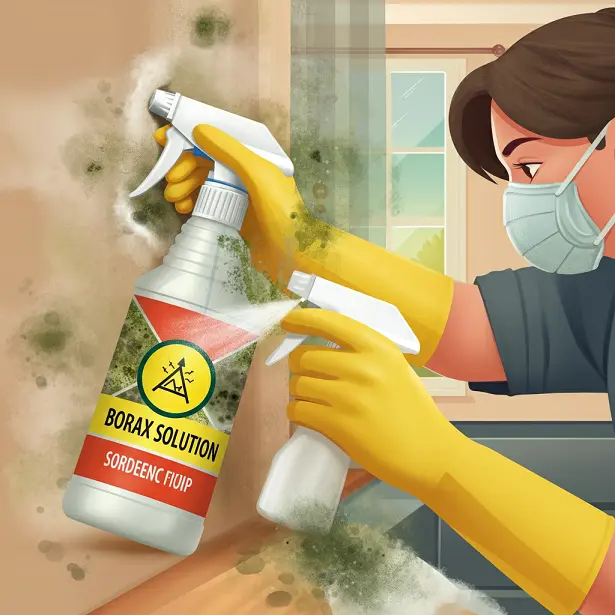How Long Does It Take for Dust to Settle
Dust is a constant companion in our daily lives, whether it comes from cleaning, construction, or even just the natural settling of particles in our homes. Knowing how long dust takes to settle can help you maintain a cleaner and healthier living environment. This guide dives into the different scenarios where dust is present and offers practical tips to manage it effectively.
Table of Contents
Understanding Why Dust Settles
Dust is made up of tiny particles, ranging from dirt and pollen to skin cells and even microscopic debris. These particles become airborne due to movement, wind, or cleaning activities. Eventually, gravity pulls dust down to horizontal surfaces, which is why we notice it settling on tables, shelves, and floors.
Common Factors That Affect Dust Settlement
The time it takes for dust to settle is influenced by several factors, including:
- Particle Size: Larger particles settle more quickly than smaller, lightweight ones.
- Air Movement: Fans or open windows increase air circulation, causing dust to remain suspended longer.
- Humidity Levels: High humidity makes dust particles heavier, encouraging faster settlement.
- Room Activity: More movement within a space can prolong the time it takes for dust to settle.
Understanding these factors can help you predict and manage dust buildup more effectively.
How Long Does It Take for Dust to Settle?
On average, dust particles take anywhere from a few minutes to several hours to settle. Tiny particles in still air tend to stay suspended longer, sometimes for hours or even days. Larger particles, however, fall more quickly due to their weight.
For example, if you notice dust swirling after fluffing pillows or shaking out blankets, it might take around 20 to 30 minutes for the particles to completely settle. However, in areas with active airflow, it could take much longer.
How Long Does It Take for Dust to Settle After Vacuuming?
Vacuuming can stir up both visible and microscopic dust, spreading it into the air. The time dust takes to settle after vacuuming depends on the vacuum’s filtration system and airflow. Without a high-efficiency particle air (HEPA) filter, fine dust can remain airborne for up to an hour.
To speed up the settling process and prevent dust resuspension, consider using vacuums equipped with a HEPA filter. This ensures most particles are trapped during cleaning.
How Long Does It Take for Construction Dust to Settle?
Construction environments create a significant amount of dust, including fine particles like drywall debris and sawdust. These particles can remain suspended for long periods, especially in areas with poor ventilation. On average, it may take:
- Hours to Days: For visible construction dust to clear in an area with stagnant air.
- 72+ Hours: For microscopic construction particles to fully settle unless cleaned.
Using air purifiers or strategically placed fans can reduce dust settlement time significantly.
How Long Does It Take for Drywall Dust to Settle?
Drywall dust is particularly tricky because it consists of fine gypsum particles that can linger in the air for extended durations. Depending on room conditions:
- It typically takes several hours for noticeable drywall dust to settle.
- Smaller, almost invisible particles may float in the air for up to 48 hours.
To clear drywall dust efficiently, seal off the area where sanding occurs. Utilize damp cloths and vacuum attachments specifically designed for fine particles.
How Long Does It Take for Silica Dust to Settle?
Silica dust, commonly produced during construction and materials sanding, is a health hazard that settles much slower than general dust. Its tiny size allows it to stay airborne for hours or even days in poorly ventilated spaces. Using proper personal protective equipment (PPE) and controlling dust at the source is critical in handling silica dust risks.
The Health Impacts of Uneven Dust Settlement
When dust doesn’t settle quickly, it can lead to poor indoor air quality and various health problems. Prolonged exposure to dust particles can cause:
- Allergic reactions like sneezing and watery eyes.
- Aggravation of asthma or other respiratory issues.
- Long-term risks from inhaling harmful dust types, such as crystalline silica.
Understanding a specific type of dust helps in planning effective control and cleaning practices to minimize these health impacts.
Tips to Reduce Dust in Your Home
Here are some practical ways to manage and reduce dust accumulation:
- Regular Cleaning: Dust surfaces frequently, especially in high-traffic areas.
- Air Purifiers: Invest in devices with HEPA filters to trap airborne particles.
- Minimize Carpets: Carpets tend to trap dust. Opt for hard flooring where possible.
- Wash Fabrics Often: This includes bedding, curtains, and cloth furniture covers.
- Seal Gaps: Prevent outdoor dust from entering by sealing doors and windows properly.
Cleaning Techniques That Help Manage Dust
Using the right cleaning methods can significantly reduce the time it takes for dust to settle. Techniques like damp dusting capture particles more effectively than dry dusting, which tends to stir them back into the air.
Vacuuming regularly with a high-quality machine, mopping hard floors, and using microfiber cloths for surface cleaning are reliable methods to keep dust at bay.
Tools and Equipment to Minimize Dust
To maintain a dust-free space, consider these tools:
- HEPA Vacuums: Specifically designed to trap fine particles.
- Dust Mops: Ideal for hardwood and tiled floors.
- Air Quality Monitors: Help detect the level of airborne particles in your home.
- Dehumidifiers: Combat high humidity levels to prevent dust clinging to surfaces.
Investing in higher-quality equipment can make an enormous difference in keeping your home cleaner.
The Role of Air Quality on Dust Behavior
Air quality plays a major role in determining how quickly dust settles. High pollution or even pollen seasons can introduce more particles into your indoor environment. Using air purifiers and monitoring ventilation helps keep dust levels manageable throughout the year.
Myths About Dust and Their Debunking
Several misconceptions about dust can derail your cleaning efforts. For instance:
- Myth: Dusting with a dry cloth is effective.
- Reality: Dry dusting often pushes particles into the air instead of capturing them.
By understanding the facts, you can implement better practices for managing dust in your living space.
Microdust and How to Handle It
Microdust, almost invisible to the naked eye, requires special attention as it often includes pollutants like dead skin cells, tiny debris, and allergens. Keeping your HVAC systems clean and ensuring proper filtration in air purifiers can help mitigate its presence.
Final Thoughts on Dust Management
Managing dust effectively comes down to understanding the circumstances that affect its settling time and adopting the best strategies for your space. Whether you’re dealing with everyday house dust or construction debris, well-planned cleaning routines, appropriate tools, and improved air circulation can all contribute to a healthier, cleaner environment.
FAQs
Why does the dust in my home never seem to settle fully?
Dust resuspends due to air movement from fans, HVAC systems, or even people walking around. Using air purifiers and damp cleaning methods can help reduce this issue.
How can I speed up the settling of construction dust?
Use air purifiers, open windows to increase ventilation, or clean frequently during the project to prevent excessive buildup.
Is drywall dust harmful to health?
Yes, drywall dust contains fine gypsum particles that can irritate the lungs. Wearing masks and ensuring proper ventilation during cleanup can help protect you.
What makes silica dust so dangerous?
Silica dust consists of tiny, sharp particles that can cause severe respiratory conditions like silicosis when inhaled frequently or in large amounts.
Does vacuuming make dust worse?
Without proper filtration, such as a HEPA filter, vacuums can recirculate fine dust into the air. Using a good vacuum and cleaning regularly can prevent this issue.
By taking active measures, educating yourself on proper cleaning techniques, and investing in the right tools, you can significantly reduce the dust levels in your home. Keep these tips in mind to tackle dust effectively and maintain a healthier living environment!







